Gravel driveways offer an affordable and attractive option for homeowners, but without proper edging, loose stones can spread onto lawns and landscaping. Effective edging not only contains gravel within defined boundaries but also enhances curb appeal and reduces maintenance requirements. From traditional stone and brick borders to modern metal strips and creative recycled materials, there are numerous approaches to creating clean, functional driveway edges. The right edging solution depends on your budget, aesthetic preferences, climate conditions, and maintenance expectations. These 25 ideas showcase diverse materials and installation methods that can suit any home style and transform an ordinary gravel driveway into a well-defined landscape feature.
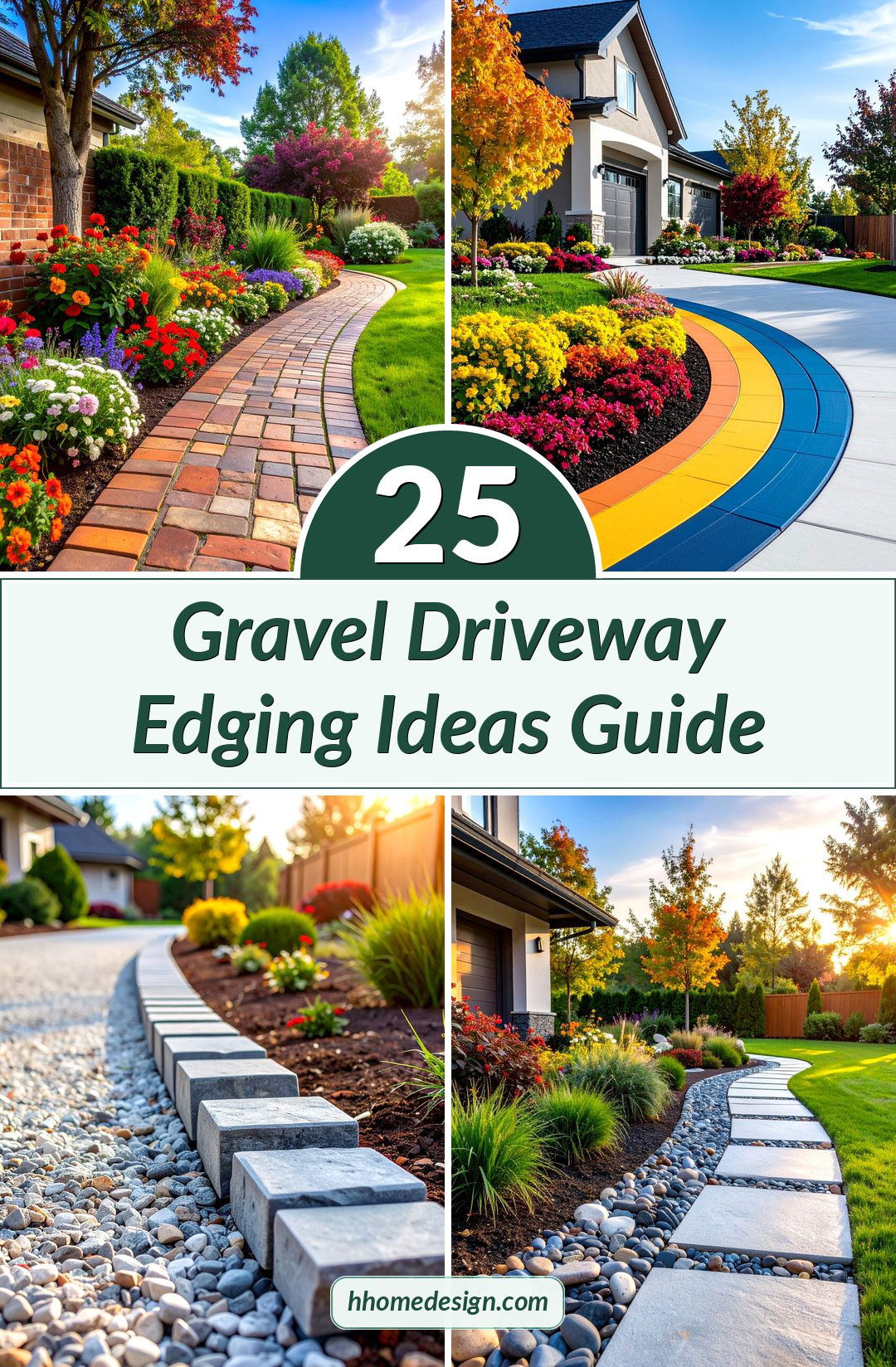
1. Belgian Block Stone Edging
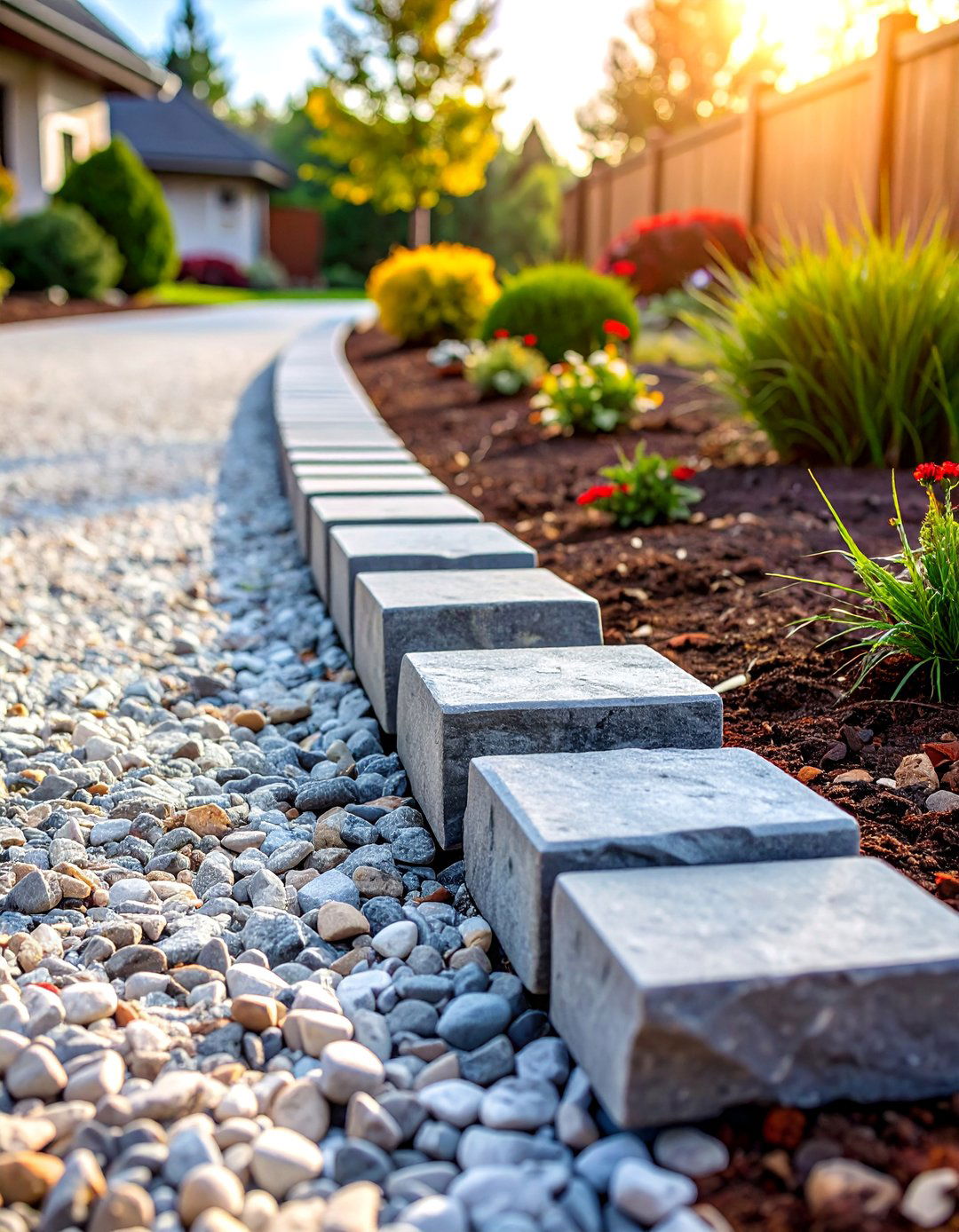
Belgian blocks create one of the most sophisticated and durable edging solutions for gravel driveways. These large granite stones, typically measuring 11 inches by 8 inches by 4 inches, provide substantial visual weight and permanent containment. The blocks work especially well when set lengthwise along the driveway perimeter, with approximately one inch rising above the gravel surface. Their substantial size prevents shifting under vehicle pressure while creating an elegant transition between driveway and landscape. Belgian blocks complement traditional and historic home styles particularly well, offering a timeless appearance that increases property value. Installation requires proper base preparation with compacted stone, but once installed, they require virtually no maintenance and withstand harsh weather conditions for decades.
2. Steel Strip Edging Systems
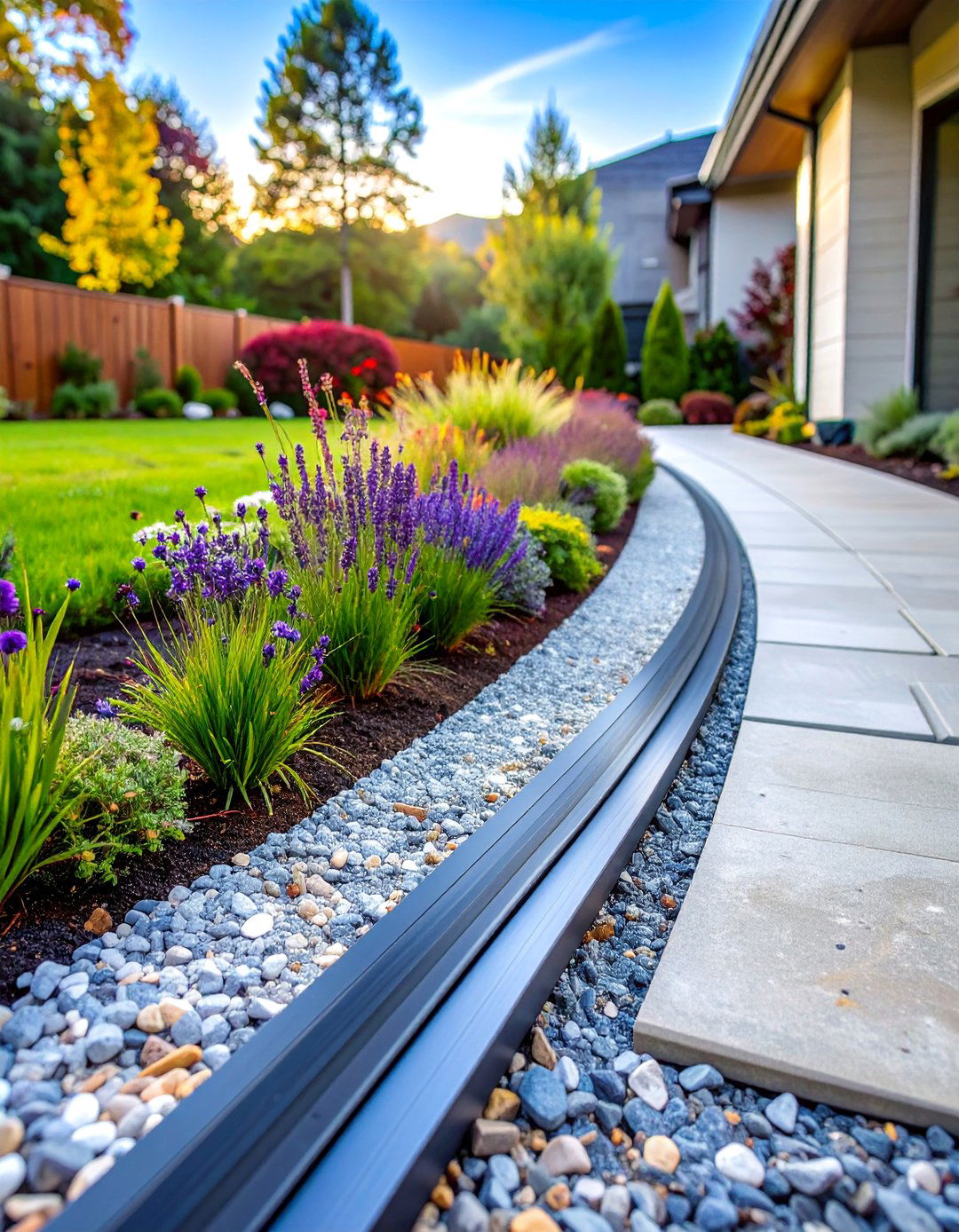
Modern steel edging strips offer clean, minimalist boundaries that blend seamlessly with contemporary landscape designs. These thin metal strips, typically 4 to 6 inches high, install flush with the ground to create nearly invisible barriers that effectively contain gravel. High-quality steel edging features powder coating for corrosion resistance and dual-stake locking systems for stability. The material's strength prevents bending under vehicle weight while maintaining flexibility for curved installations. Steel edging works particularly well around circular or curved driveways where rigid materials would require cutting. Most systems include pre-scored sections for easy corner installation and come with galvanized spikes for secure anchoring. The sleek appearance complements modern homes while providing decades of reliable gravel containment.
3. Brick Paver Driveway Borders
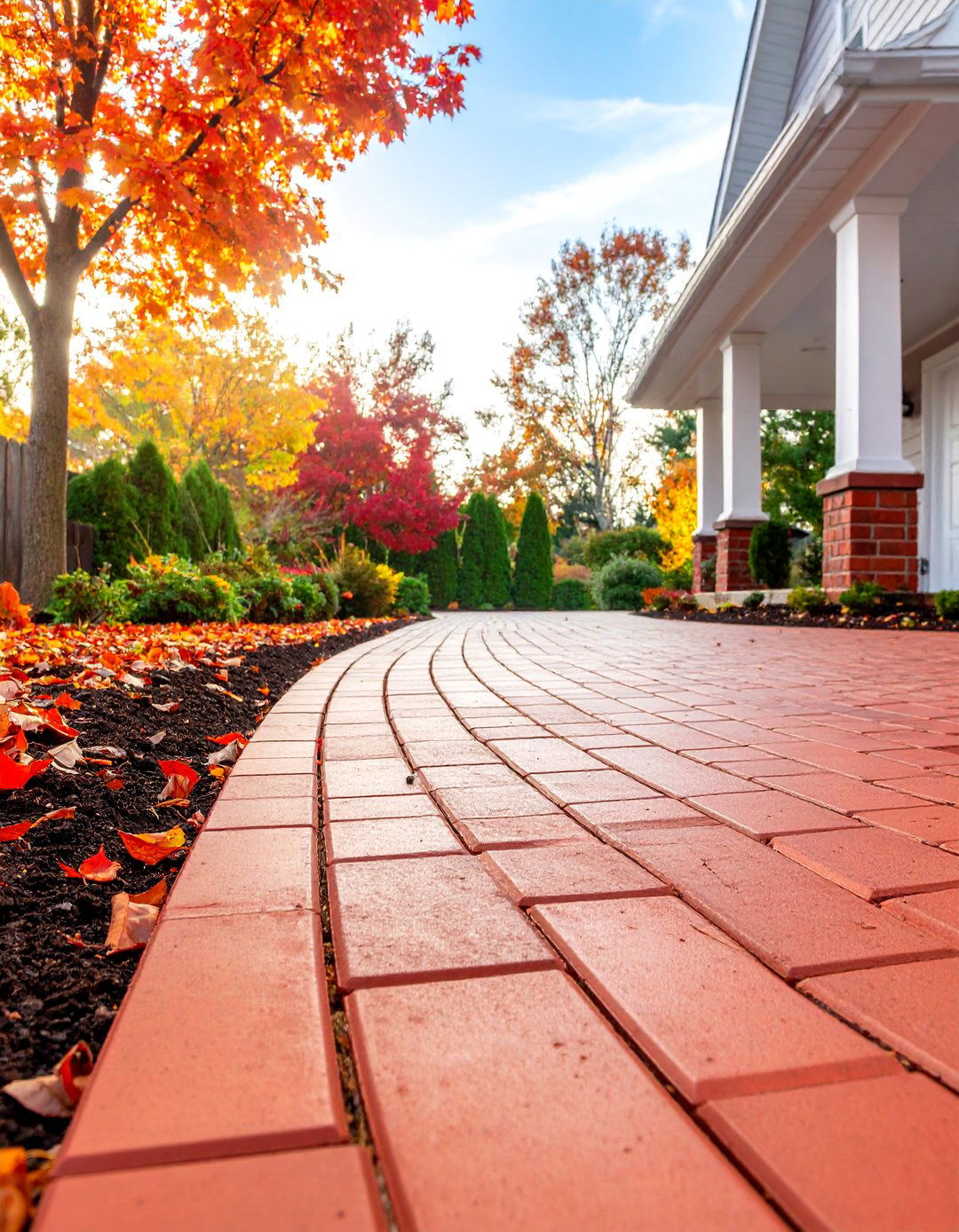
Traditional brick pavers create warm, classic edging that complements homes with brick exteriors or traditional architectural styles. Clay bricks offer excellent durability and come in various colors from deep red to charcoal, allowing customization to match existing structures. Installation involves digging shallow trenches and laying bricks on a sand base for proper drainage and stability. Bricks can be arranged vertically for maximum height or horizontally for subtle definition, with herringbone or running bond patterns adding visual interest. The modular nature of brick pavers makes replacement easy if damage occurs. Regular maintenance involves occasional sweeping and replacing loose units, but properly installed brick edging can last for decades while developing attractive weathered patina that enhances character.
4. Concrete Paver Edging
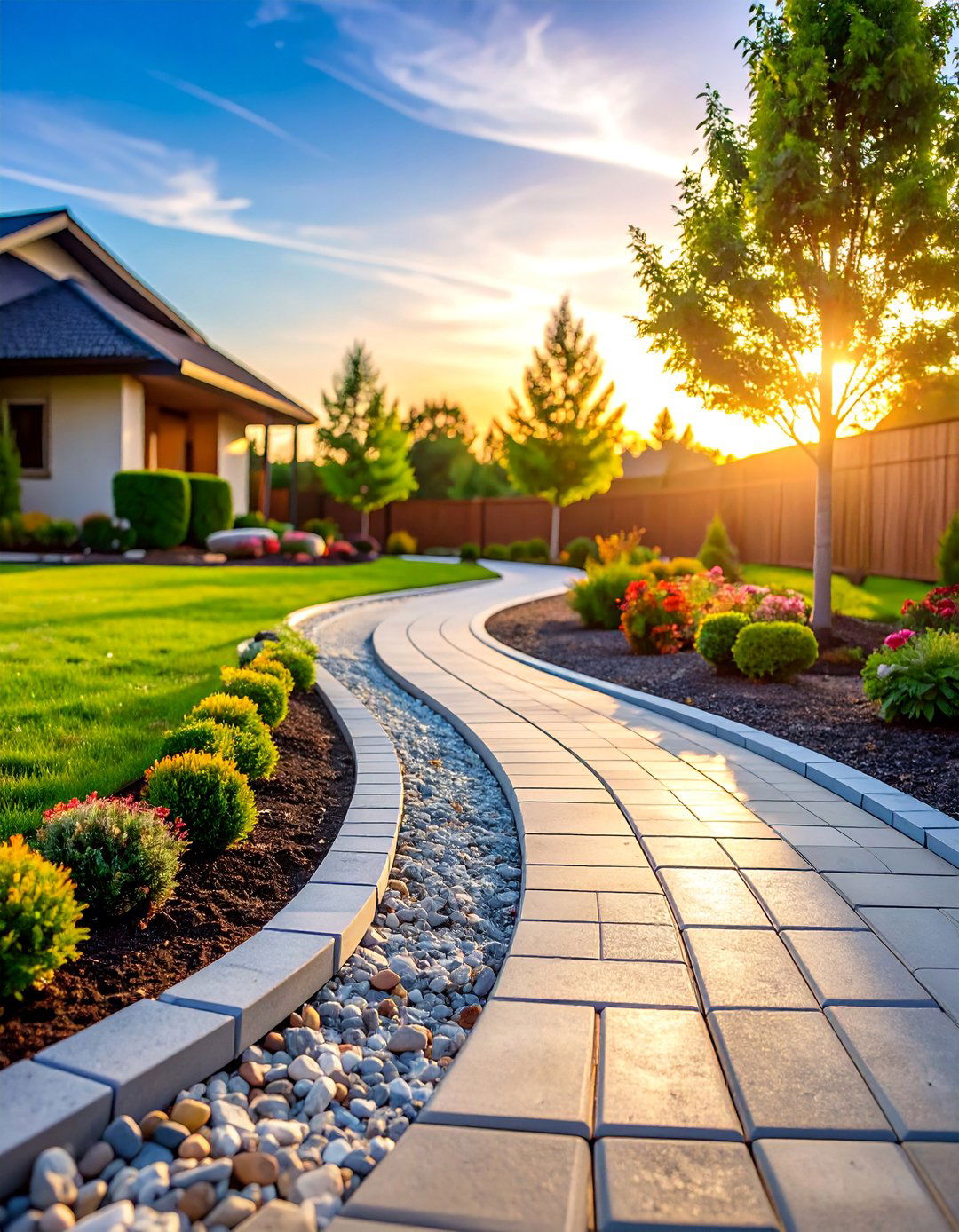
Concrete pavers provide versatile, cost-effective edging with numerous design possibilities for gravel driveway borders. Available in multiple sizes, shapes, and colors, concrete pavers can mimic natural stone appearance while offering superior uniformity and strength. Interlocking designs ensure stable installation that resists shifting under traffic loads. The smooth surfaces make snow removal easier in winter climates, while textured options provide slip resistance. Concrete pavers work well for both straight and curved applications, with specialized edge pieces available for professional-looking corners and transitions. Installation requires proper base preparation with compacted gravel and sand leveling course. The neutral colors of concrete pavers complement any architectural style while providing clean lines that enhance property aesthetics and clearly define driveway boundaries.
5. Natural Stone Rock Borders
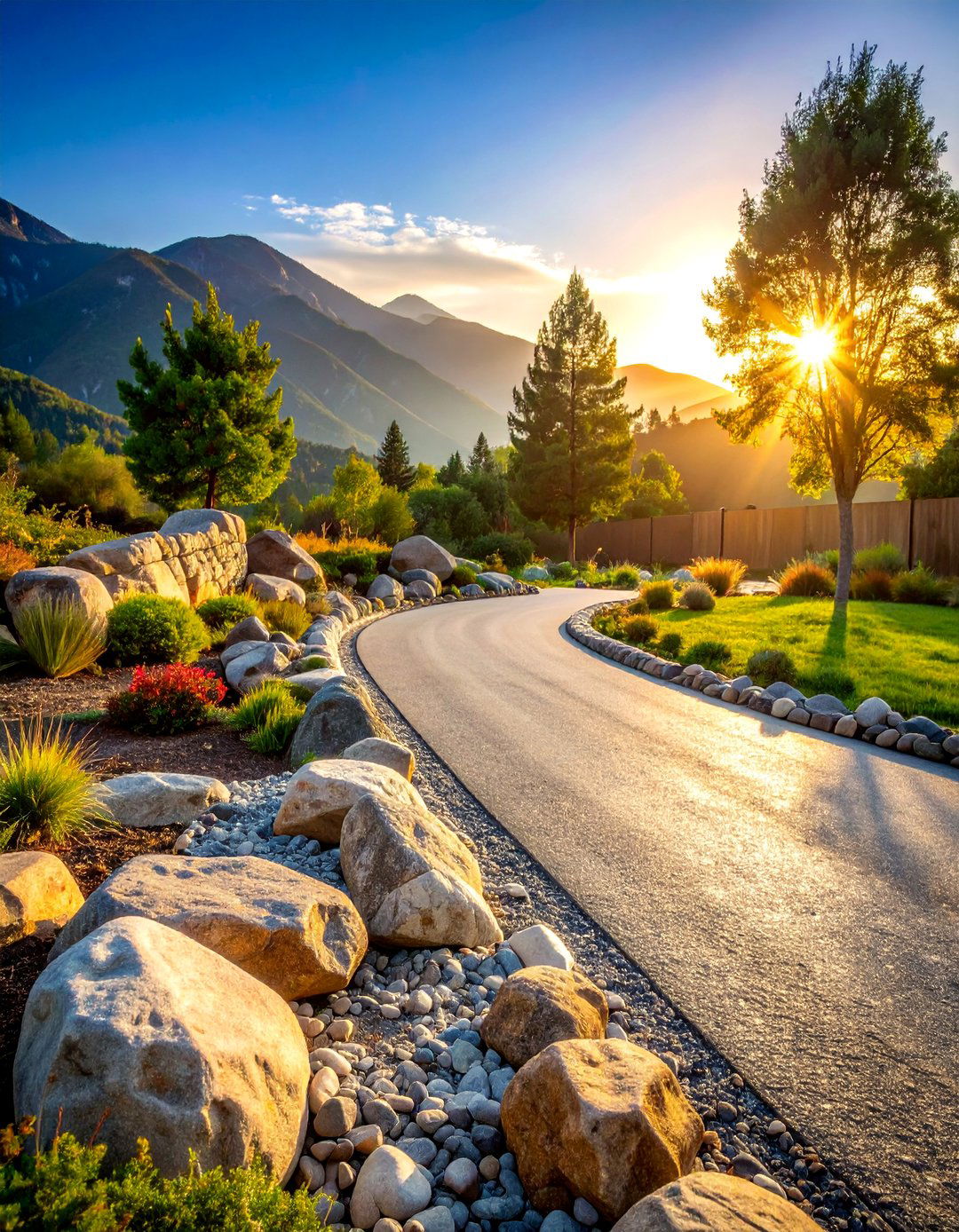
Large natural stones create organic, rustic edging that integrates driveways harmoniously with natural landscapes. Boulder borders work particularly well in rural or mountain settings where formal edging might appear out of place. Stones can be fieldstone gathered locally or purchased quarried rock in consistent sizes. The irregular shapes and natural colors provide visual interest while effectively containing gravel through their substantial weight. Installation involves minimal excavation since stones sit primarily on the surface, making this approach suitable for DIY installation. Varying stone sizes creates naturalistic appearance that complements informal garden styles. The porous nature of natural stone allows excellent drainage while providing habitat for beneficial insects. Maintenance involves occasional repositioning of stones that may settle over time.
6. Aluminum Strip Edging

Lightweight aluminum edging strips offer corrosion-resistant borders that maintain clean appearance in all weather conditions. The material's natural silver finish complements modern architectural styles while remaining unobtrusive in traditional settings. Aluminum strips typically measure 1 inch by 2.25 inches and install easily with included connectors and anchoring spikes. The material's flexibility allows smooth curves while maintaining strength for straight sections. Unlike steel, aluminum won't rust, making it ideal for coastal areas or regions with high humidity. The material expands and contracts minimally with temperature changes, reducing maintenance requirements. Professional-grade aluminum edging features reinforced tabs and precision manufacturing for consistent installation. The lightweight nature makes handling easy during installation while providing sufficient strength to contain gravel under normal traffic conditions.
7. River Rock Pebble Edging
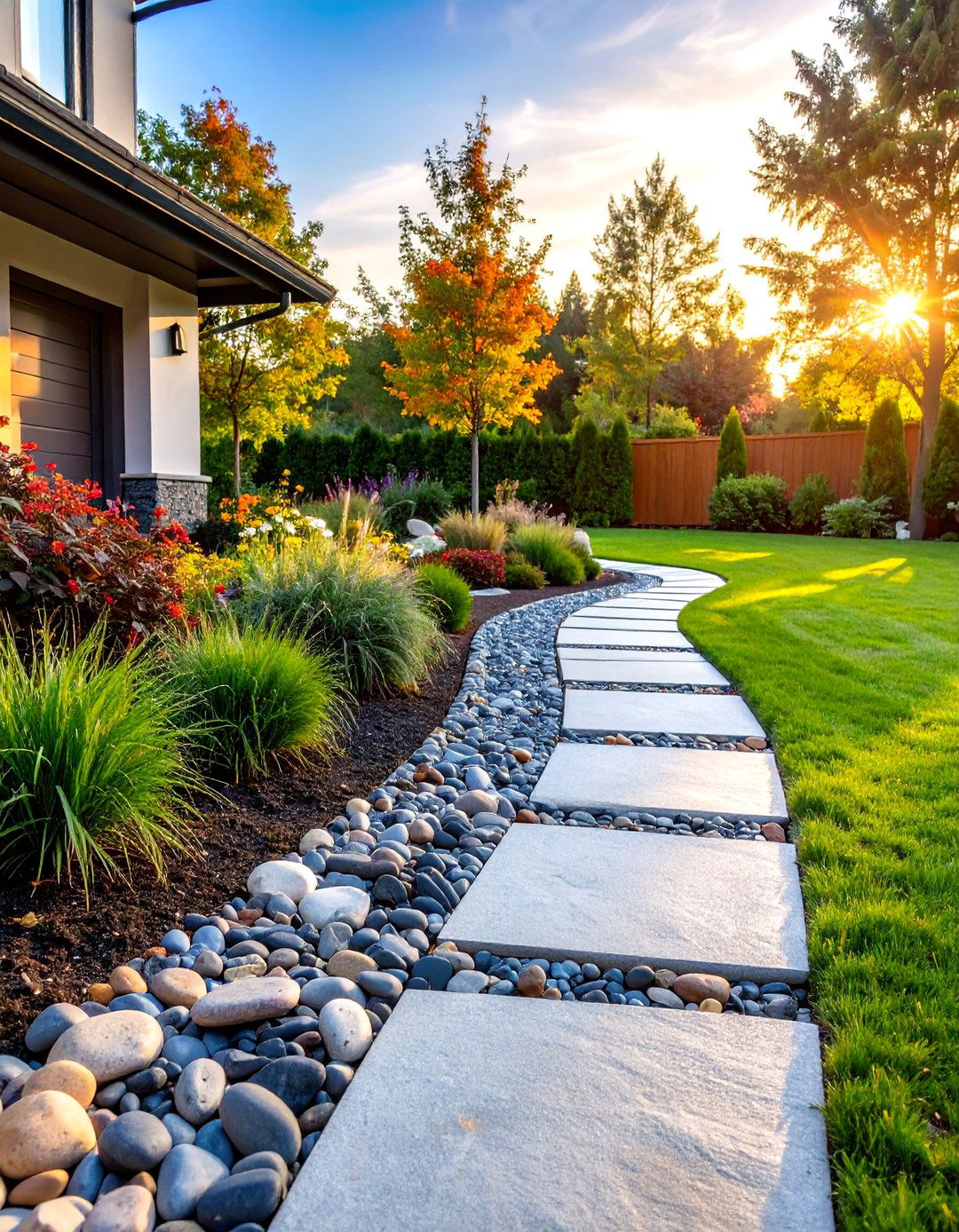
Smooth river rocks create naturally appealing borders that blend seamlessly with gravel driveways while adding textural contrast. These water-worn stones come in various sizes from small pebbles to large cobbles, allowing gradual transitions from fine to coarse materials. The rounded shapes prevent sharp edges that could damage tires while providing attractive, organic appearance. River rocks complement both formal and informal landscape designs, with color variations from gray to brown to multicolored options. Installation involves creating shallow trenches and laying landscape fabric to prevent weed growth. The stones naturally shed water and don't require maintenance beyond occasional repositioning. Smaller river rocks can be contained within larger border stones to prevent spreading. This edging style works particularly well near water features or in landscapes emphasizing natural materials.
8. Limestone Block Edging

Limestone blocks provide elegant, durable edging with natural beauty that complements both traditional and contemporary home styles. The sedimentary rock's light coloration brightens landscape borders while providing excellent weather resistance. Limestone cuts easily for custom fitting around curves or obstacles, making installation straightforward for DIY projects. The material's porosity allows good drainage while maintaining structural integrity. Natural limestone develops attractive patina over time, enhancing character rather than detracting from appearance. Blocks can be purchased pre-cut in standard sizes or custom dimensions for specific applications. The material's density provides excellent gravel containment while resisting frost damage in cold climates. Installation requires proper base preparation but doesn't need mortar for stability. Regular cleaning maintains appearance, but limestone naturally weathers to attractive, mellow tones that complement planted areas.
9. Rubber Landscape Edging

Recycled rubber edging offers flexible, environmentally friendly borders that withstand temperature extremes without cracking or degrading. Made from recycled tires, this material provides excellent value while supporting sustainable practices. Rubber edging bends easily around curves while maintaining strength for gravel containment. The material's dark color remains consistent over time without fading, providing clean borders that complement any color scheme. Installation involves minimal excavation since rubber strips pound directly into the ground with included spikes. The flexible nature prevents damage from frost heave or ground movement. Rubber edging cuts easily with standard tools for custom lengths and provides excellent traction for mowing equipment. The material won't splinter, crack, or support insect damage like wood alternatives. Maintenance involves occasional cleaning but no sealing or replacement for decades of service.
10. Concrete Curbing Borders
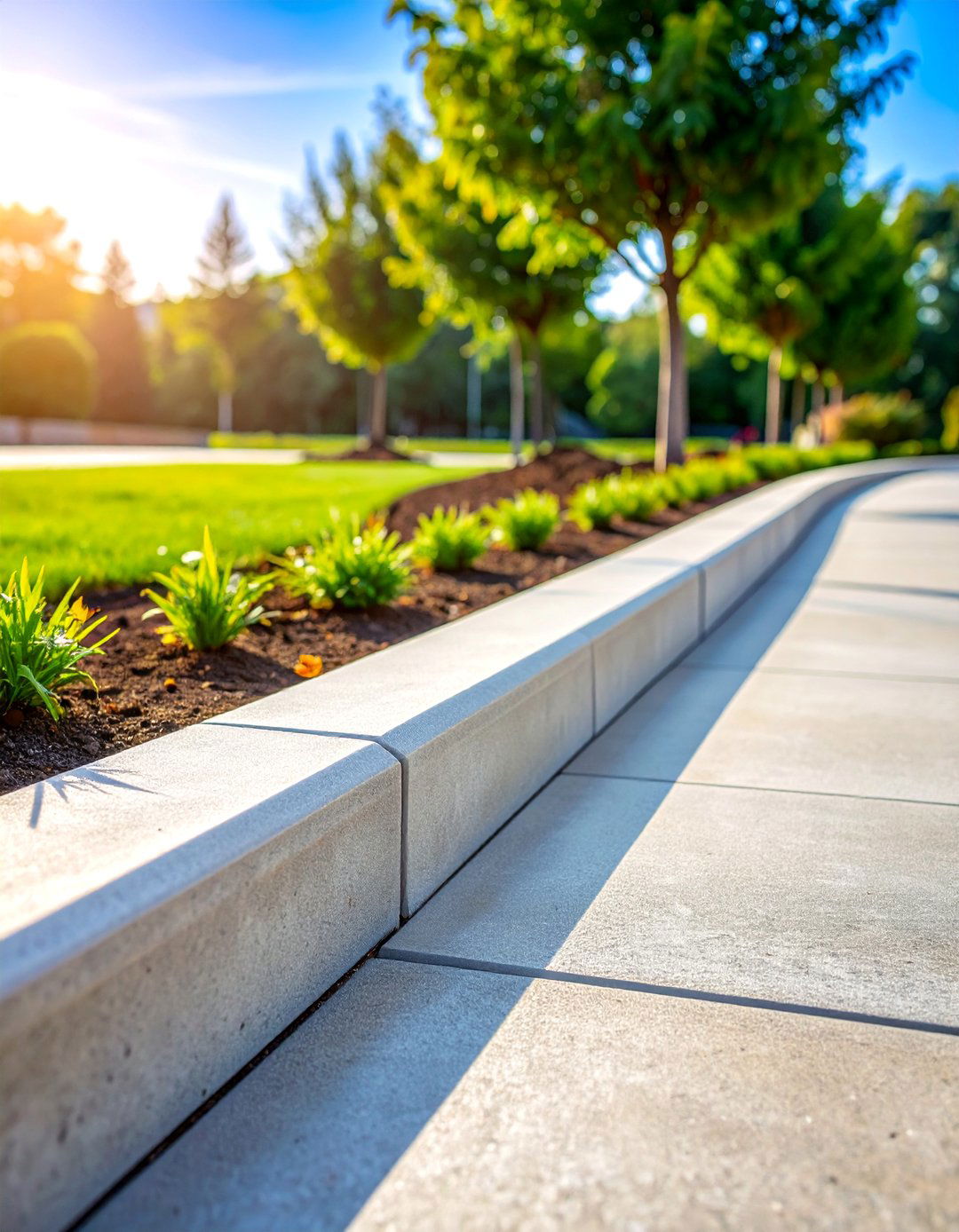
Poured concrete curbing creates substantial, permanent borders that provide maximum gravel containment with professional appearance. Custom formed concrete allows any shape or size configuration, making it ideal for complex driveway layouts or decorative applications. The material can be stamped, colored, or textured to complement architectural styles from traditional to contemporary. Concrete curbing provides excellent durability in all climates while requiring minimal maintenance over decades of service. The smooth surface facilitates easy snow removal and prevents grass growth along edges. Installation requires forms and proper mixing but creates seamless borders without joints that could collect debris. Reinforcing fiber or steel mesh increases strength for heavy traffic areas. The substantial appearance of concrete curbing works particularly well for commercial applications or homes requiring formal landscape treatment. Proper curing ensures maximum strength and longevity.
11. Flagstone Slab Edging

Large flagstone slabs create dramatic, flat borders that provide wide transitions between gravel driveways and planted areas. The irregular natural shapes offer organic appearance while flat surfaces provide stable edges for vehicles. Flagstone's stratified appearance adds geological interest to landscape designs while complementing both rustic and refined architectural styles. The material's density provides excellent gravel containment without requiring deep installation. Various stone types offer different colors from gray sandstone to red slate, allowing coordination with existing hardscape materials. Installation involves leveling and securing large pieces with minimal excavation. The wide surface area distributes weight effectively, preventing settling in most soil conditions. Flagstone edges provide convenient surfaces for snow shoveling while creating attractive borders for seasonal plantings. Regular cleaning maintains appearance, but weathering enhances natural character over time. The substantial appearance works well for wider driveways requiring more prominent definition.
12. Galvanized Steel Edging
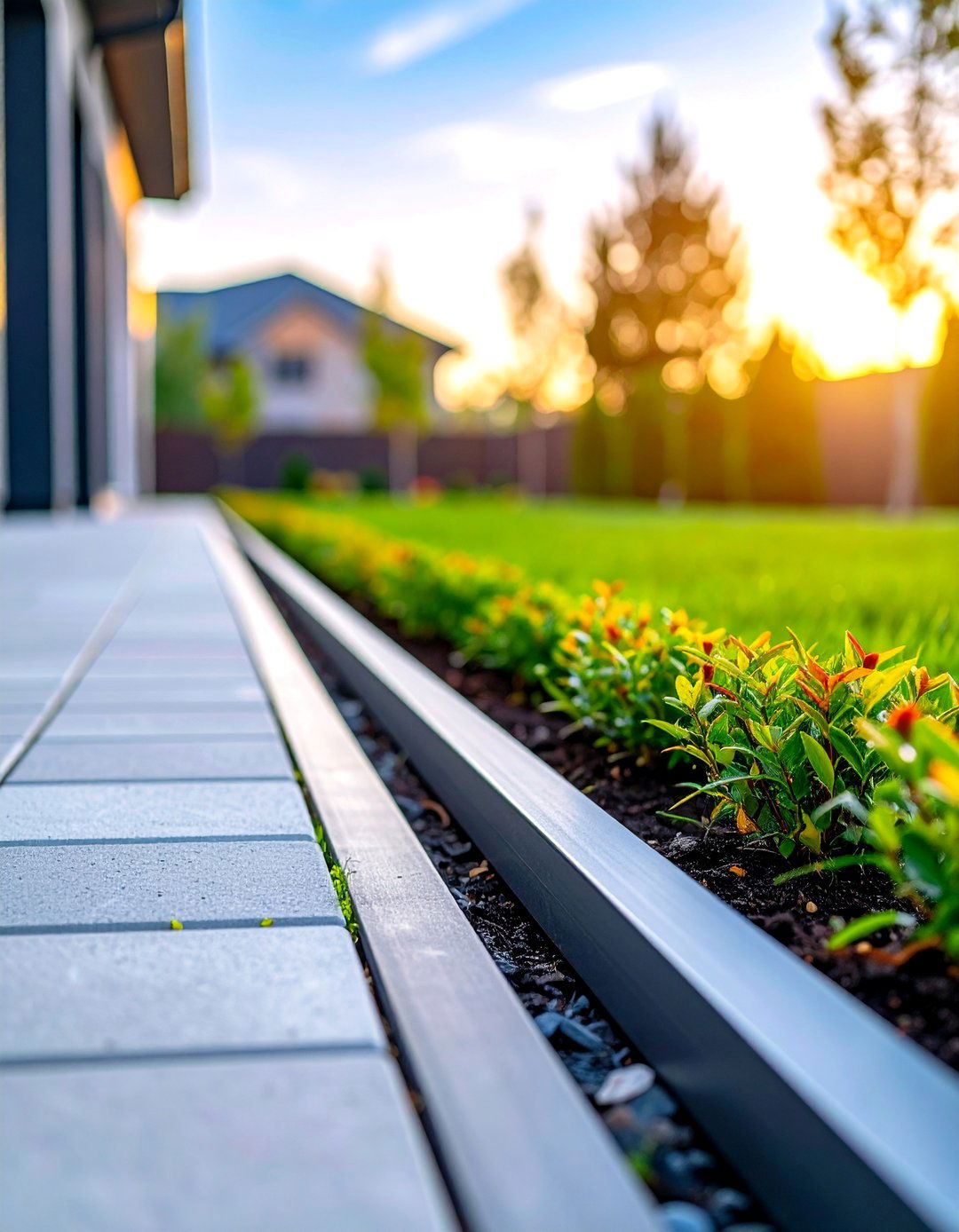
Heavy-duty galvanized steel edging provides industrial strength borders that withstand extreme conditions while maintaining professional appearance. The zinc coating prevents corrosion for decades of service in all climates, making this option ideal for coastal areas or regions with harsh winters. Galvanized edging typically features reinforced construction with built-in connection systems for seamless installation. The material's strength prevents deformation under heavy traffic while maintaining clean lines. Most systems include powder coating over galvanization for additional protection and color options. The slim profile creates minimal visual impact while providing maximum gravel containment. Professional installation tools ensure proper depth and alignment for best results. The material's expansion characteristics require proper joint spacing for temperature movement. Galvanized edging works particularly well for commercial applications or residential driveways requiring maximum durability and minimal maintenance over long service life.
13. Reclaimed Brick Borders
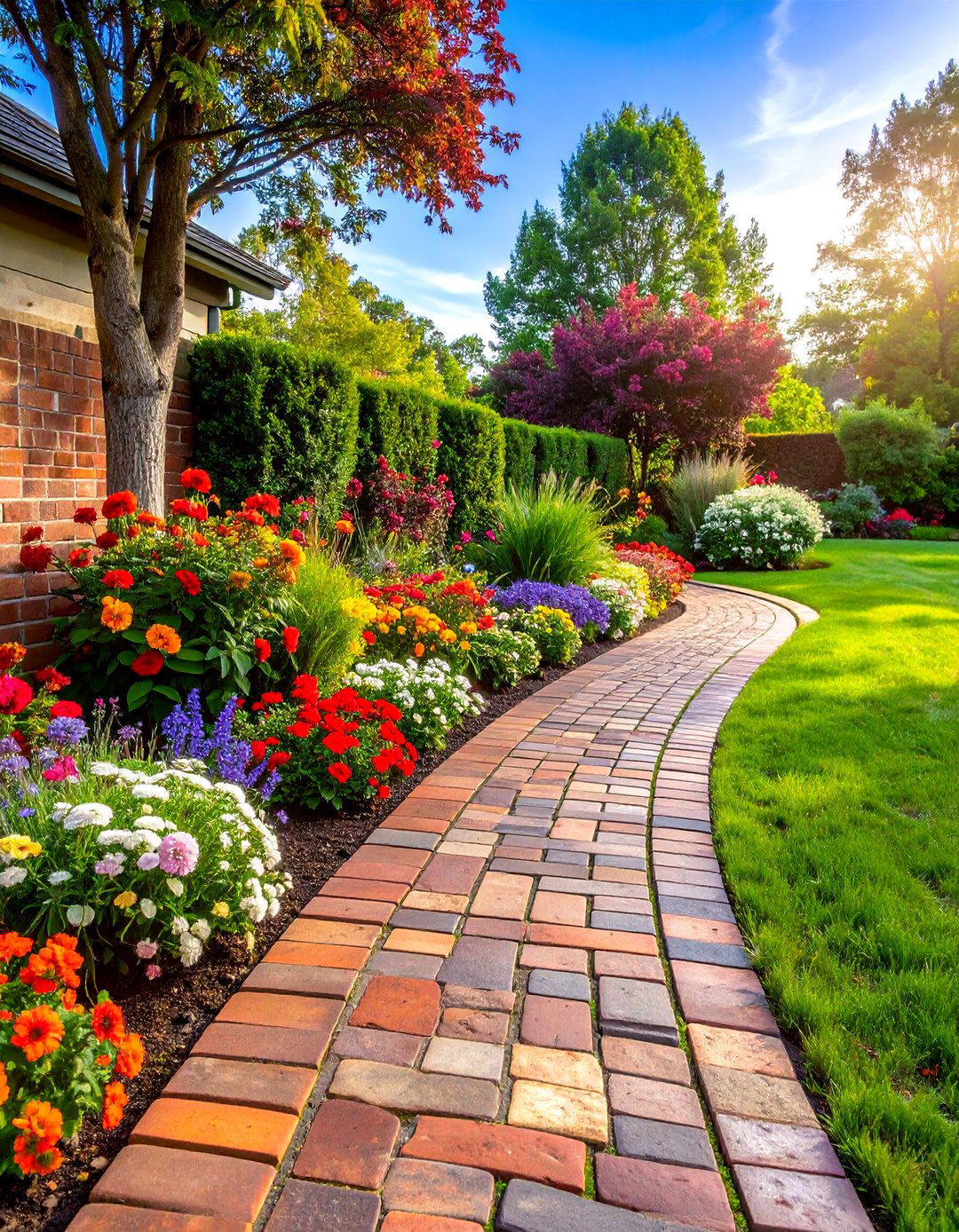
Reclaimed brick edging adds character and sustainability to gravel driveway borders while providing excellent durability and charm. Salvaged bricks offer unique patina and weathering that new materials cannot replicate, creating instant mature appearance. The varied colors and textures of aged brick complement historic homes and cottage garden styles particularly well. Reclaimed materials support environmental sustainability while often costing less than new alternatives. Installation follows standard brick procedures but requires sorting for consistent sizing and condition. The weathered appearance disguises minor imperfections while adding authentic character. Reclaimed bricks often feature different dimensions than modern units, creating unique installation opportunities. The materials' proven durability ensures decades of service with minimal maintenance. Mortar joints can be traditional or contemporary styles depending on desired appearance. Regular cleaning enhances natural beauty while preserving historical character.
14. Composite Lumber Edging
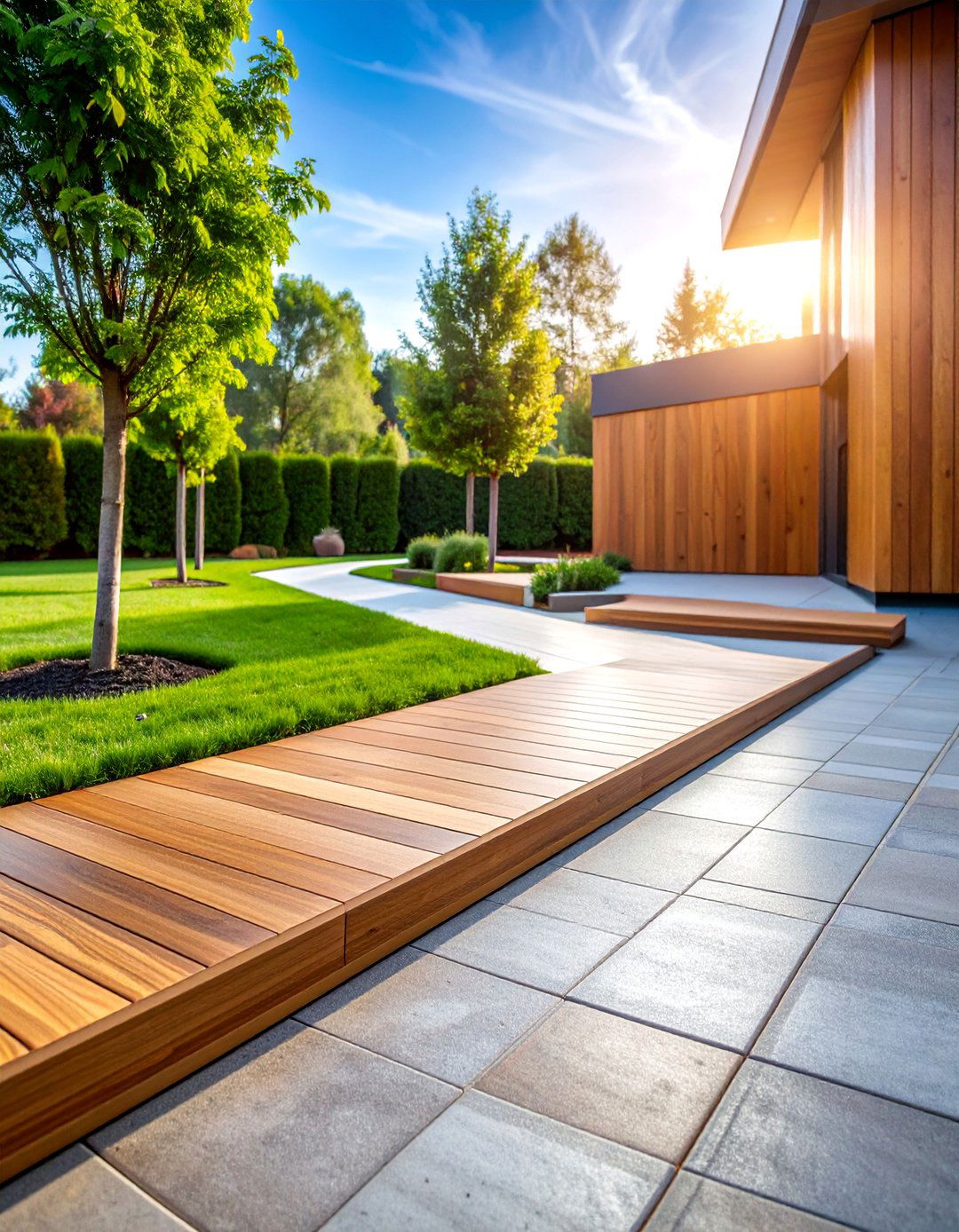
Composite lumber edging combines wood fiber with plastic polymers to create durable, low-maintenance borders that resist rot, insects, and weathering. The material looks like natural wood but requires no sealing, staining, or replacement due to decay. Composite edging cuts and installs like traditional lumber while providing superior longevity. Various colors and textures mimic different wood species while maintaining consistent appearance over time. The material won't splinter, warp, or crack like natural wood, making it safer around children and easier to maintain. Installation involves standard carpentry techniques with conventional fasteners and tools. Composite edging provides good gravel containment while offering attractive, natural appearance. The material's density resists impact damage while remaining workable for custom installations. Environmental benefits include recycled content and elimination of preservative chemicals. Costs exceed natural wood initially but eliminate ongoing maintenance expenses while providing decades of attractive service.
15. Granite Curb Stones

Granite curb stones provide premium, long-lasting edging with exceptional strength and sophisticated appearance. The igneous rock's density and hardness ensure decades of service without weathering or damage. Natural granite offers various colors from light gray to dark charcoal, with distinctive grain patterns that add visual interest. The material's weight provides excellent gravel containment without requiring deep installation. Granite curbs cut precisely for tight joints and professional appearance. The smooth surface facilitates snow removal while resisting staining and deterioration. Installation requires proper base preparation but creates permanent borders that increase property value. The material's thermal properties help regulate soil temperature around planted areas. Granite curbing works particularly well for upscale residential applications or commercial properties requiring premium appearance. Various profiles from simple rectangles to decorative shapes accommodate different design preferences. Regular cleaning maintains natural beauty, but granite develops attractive patina that enhances character over time.
16. Plastic Bender Board Edging

Recycled plastic bender boards offer economical, flexible edging that conforms easily to curved driveways while providing effective gravel containment. Made from recycled materials, these strips support environmental sustainability while delivering practical performance. The material's flexibility allows smooth curves without cutting or special fittings, making installation straightforward for DIY projects. Plastic bender boards resist rot, insects, and weathering that affect natural wood alternatives. Various colors complement different landscape schemes while maintaining consistent appearance over time. Installation involves minimal excavation since strips pound into the ground with included stakes. The lightweight material handles easily while providing sufficient strength for normal traffic. Maintenance involves occasional cleaning but no sealing or treatment requirements. The smooth surface prevents grass growth along edges while allowing easy mowing. Costs remain low compared to premium materials while providing years of reliable service in most climate conditions.
17. Sandstone Block Edging

Sandstone blocks create warm, natural edging that complements desert landscapes and southwestern architectural styles. The sedimentary rock's earth tones range from tan to red, providing attractive color coordination with many building materials. Sandstone cuts easily for custom fitting while maintaining structural integrity for gravel containment. The material's texture adds visual interest while providing good traction for pedestrians. Natural variations in color and grain create unique installations that enhance landscape character. Installation involves standard masonry techniques with proper base preparation. The material's porosity allows excellent drainage while resisting frost damage in most climates. Sandstone blocks work well for both formal and informal applications, depending on finishing techniques. The material's density provides effective gravel containment while creating attractive transitions to planted areas. Regular cleaning maintains appearance, but natural weathering enhances character over time. Various sizes and shapes accommodate different design requirements while maintaining consistent material character.
18. Railroad Tie Borders

Railroad ties create substantial, rustic edging that provides maximum gravel containment with distinctive industrial character. The heavy timber construction resists shifting under traffic while offering authentic railroad heritage appearance. Reclaimed ties provide environmental benefits while delivering proven durability from decades of railroad service. The substantial size creates dramatic landscape statements while effectively defining driveway boundaries. Installation requires excavation for partial burial but provides permanent borders that resist weather damage. The dark creosote treatment preserves wood while creating consistent appearance. Railroad ties work particularly well for rural properties or industrial-themed landscapes. The linear geometry suits contemporary designs while maintaining traditional appeal. Various lengths accommodate different installation requirements while maintaining proportional appearance. The material's weight eliminates concerns about shifting or movement under normal conditions. Regular inspection ensures continued stability, but properly installed railroad ties provide decades of reliable service with minimal maintenance requirements.
19. Weathering Steel Edging
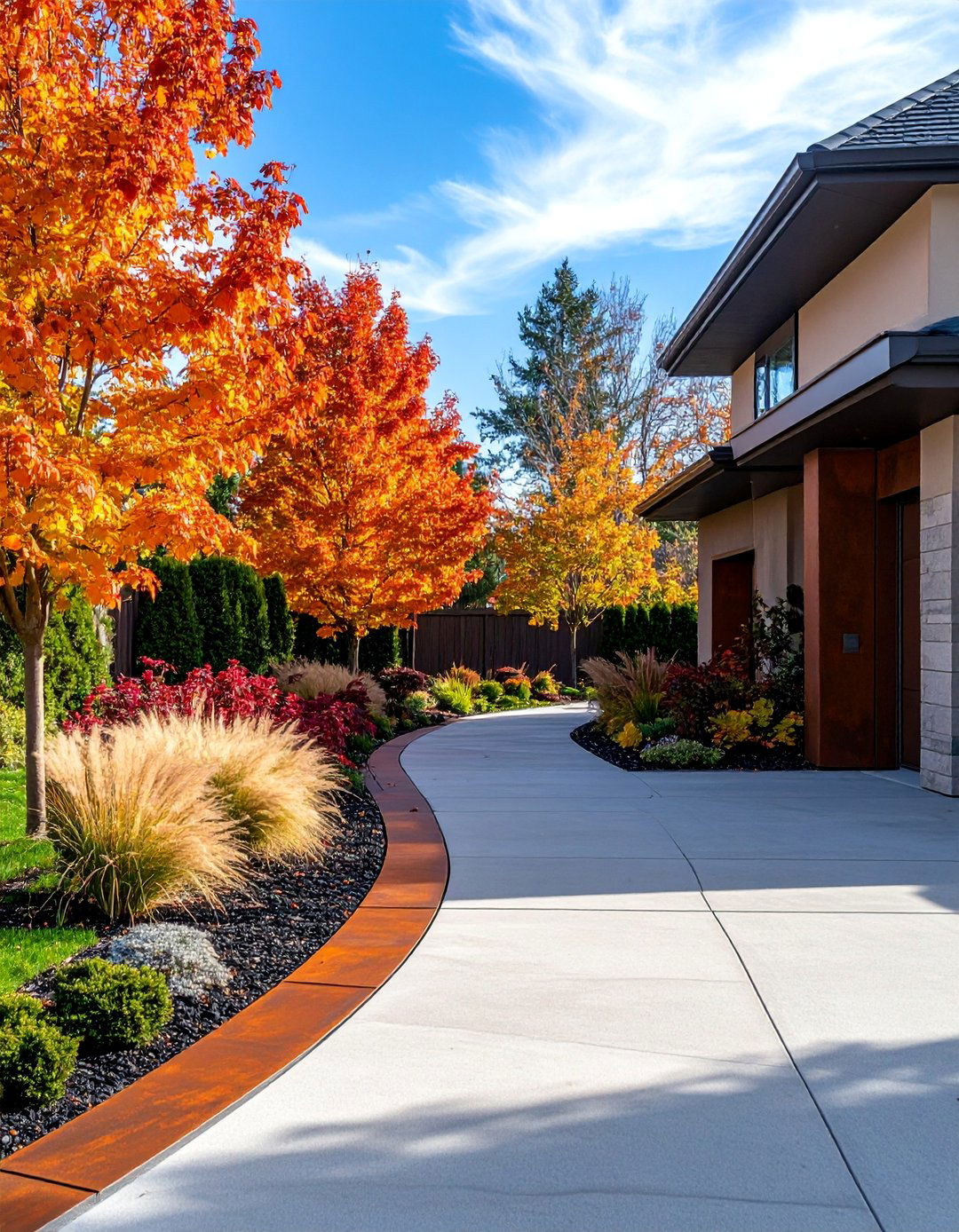
Weathering steel edging develops protective rust patina that enhances appearance while providing superior corrosion resistance. The controlled oxidation process creates attractive bronze-brown coloration that complements natural materials while maintaining structural integrity. This material works particularly well for contemporary designs emphasizing industrial aesthetics. The patina development eliminates painting requirements while providing long-term weather protection. Weathering steel maintains clean lines while developing character over time. Installation follows standard steel procedures with proper base preparation. The material's strength prevents deformation while allowing flexibility for curved installations. Various heights accommodate different containment requirements while maintaining consistent appearance. The oxidation process requires initial weathering period but stabilizes to permanent finish. Weathering steel complements modern architectural styles while providing practical gravel containment. The material's expansion characteristics require proper joint design for temperature movement. Professional appearance and low maintenance make this option ideal for upscale residential or commercial applications.
20. Concrete Masonry Units
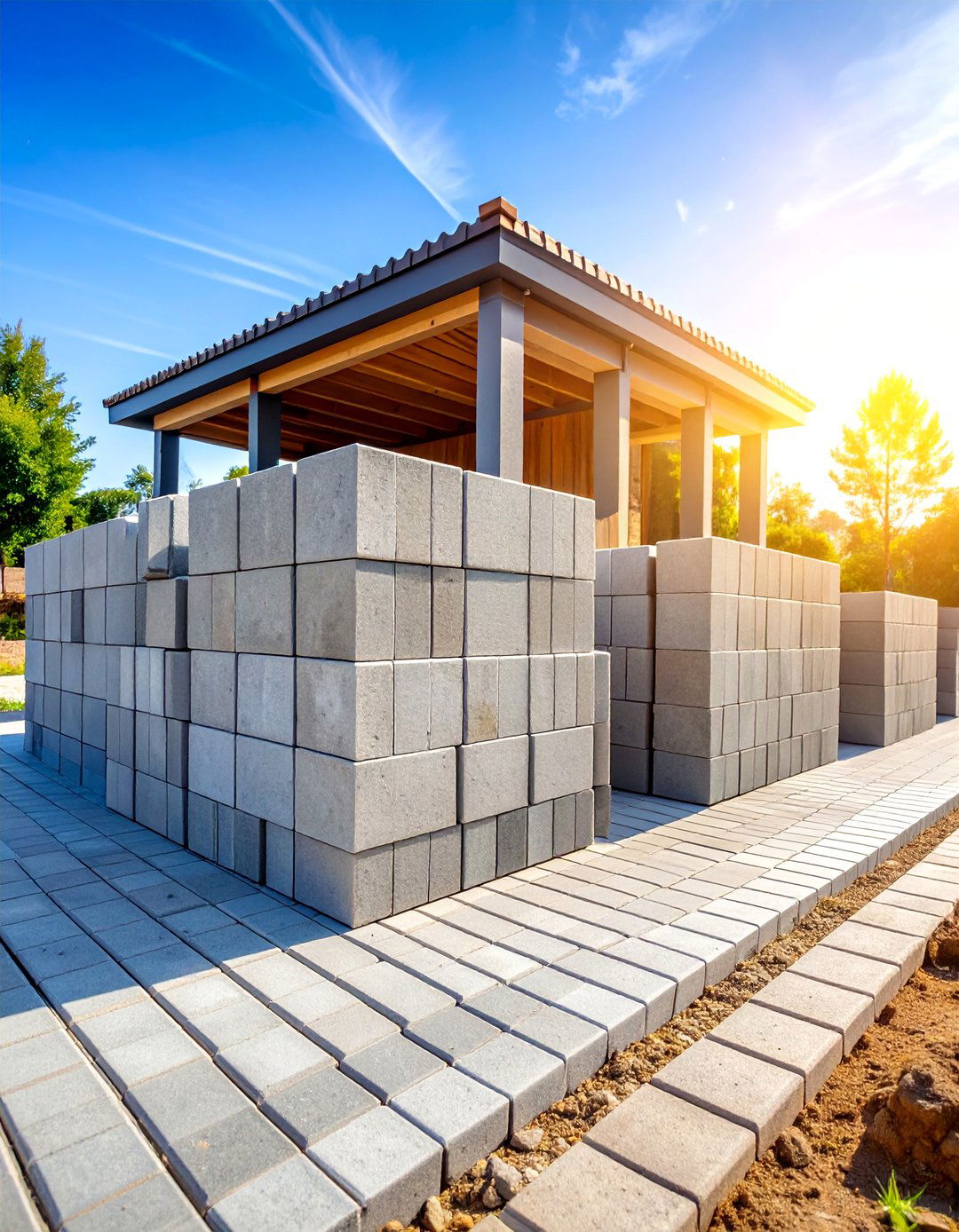
Concrete masonry units (CMUs) provide modular, economical edging with excellent strength and consistent appearance. These hollow blocks offer good drainage while providing substantial gravel containment. The modular design simplifies installation while accommodating curves through specialized units. Various sizes and profiles suit different applications from residential to commercial. CMUs can be left natural or finished with stucco, paint, or stone veneer for enhanced appearance. The hollow cores allow reinforcement with steel and concrete for maximum strength. Installation requires proper foundation but creates permanent borders with minimal maintenance. The material's thermal mass helps regulate soil temperature around planted areas. CMUs work well for utilitarian applications or can be enhanced for decorative use. The uniform appearance suits contemporary designs while providing cost-effective performance. Various textures and colors accommodate different design preferences while maintaining structural consistency. Proper drainage prevents water accumulation while ensuring long-term stability.
21. Permeable Paver Grids

Permeable paver grid systems lock gravel in place while eliminating traditional edging requirements entirely. These plastic or concrete grids create stable driving surfaces while allowing natural drainage and groundwater recharge. The grid cells contain gravel securely while supporting vehicle traffic without deformation. Installation involves minimal excavation with proper base preparation for maximum stability. Various grid heights accommodate different gravel sizes while maintaining surface integrity. The permeable design eliminates runoff concerns while providing excellent load distribution. Grid systems work particularly well for environmentally sensitive areas or properties with drainage restrictions. The modular design allows custom configurations while maintaining consistent performance. Maintenance involves occasional gravel replenishment but eliminates edging repairs or replacement. The invisible installation maintains natural appearance while providing superior functionality. Various manufacturers offer different grid designs optimized for specific applications from residential to commercial use. Long-term performance exceeds traditional gravel installations while reducing environmental impact.
22. Bamboo Fence Edging

Bamboo fencing creates sustainable, attractive edging that provides natural screening while containing gravel effectively. The renewable material offers rapid growth and carbon sequestration benefits while delivering practical performance. Bamboo's natural flexibility allows curved installations while maintaining structural integrity. Various species provide different colors and diameters for design flexibility. Installation involves standard fencing techniques with proper post spacing for stability. The material's lightness simplifies handling while providing adequate strength for gravel containment. Bamboo develops attractive patina over time while maintaining structural properties. The vertical installation creates visual barriers while allowing air circulation. Various heights accommodate different screening and containment requirements. The sustainable characteristics appeal to environmentally conscious homeowners while providing unique aesthetic qualities. Regular inspection ensures continued stability, but properly installed bamboo provides years of attractive service. The exotic appearance works particularly well for contemporary or Asian-inspired landscape designs while supporting sustainable building practices.
23. Decorative Block Edging

Decorative concrete blocks combine functional gravel containment with architectural detail for enhanced landscape appeal. These units feature textured surfaces, colors, or patterns that add visual interest while providing practical borders. Various profiles from simple geometric to elaborate decorative shapes accommodate different design themes. The modular construction simplifies installation while ensuring consistent appearance. Decorative blocks can coordinate with building materials or contrast for accent effects. Installation follows standard masonry procedures with proper foundation preparation. The concrete construction provides excellent durability while maintaining design integrity. Various sizes accommodate different scale requirements from residential to commercial applications. The decorative elements eliminate the institutional appearance of plain concrete while providing superior performance. Color options include integral pigments or applied finishes for enhanced appearance. Regular cleaning maintains decorative details while extending service life. These blocks work particularly well for formal landscapes requiring architectural continuity while providing practical gravel containment.
24. Mixed Material Borders
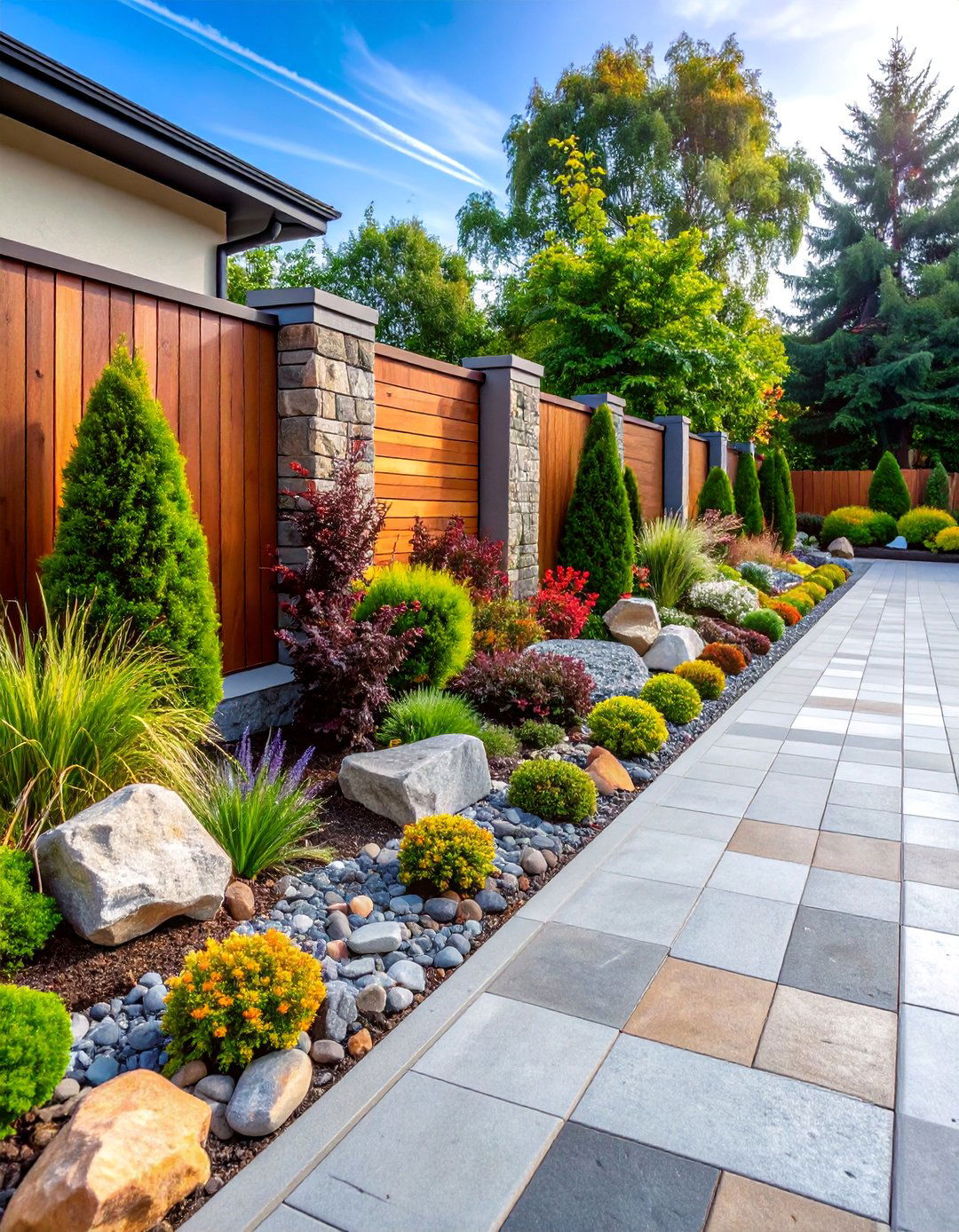
Mixed material edging combines different elements to create unique, personalized borders that reflect individual style preferences. Combinations might include stone and metal, wood and concrete, or brick and plants for varied textures and colors. The diverse materials create visual interest while addressing different functional requirements along the driveway length. Design flexibility allows adaptation to changing landscape conditions or architectural features. Installation requires coordination of different techniques but creates distinctive results. Mixed materials can address budget constraints by combining premium and economical elements strategically. The varied textures and colors create dynamic borders that enhance landscape complexity. Different materials can address specific drainage, stability, or aesthetic requirements in different locations. Creative combinations allow unique expression while maintaining practical gravel containment. Professional design assistance helps coordinate materials effectively while ensuring structural compatibility. Maintenance requirements vary by material but proper planning minimizes ongoing care while maximizing visual impact.
25. Living Plant Borders

Living plant borders create natural, evolving edging that provides gravel containment while enhancing biodiversity and seasonal interest. Low-growing shrubs, ornamental grasses, or perennial flowers define driveway boundaries while supporting pollinators and wildlife. Plant selection should emphasize dense growth habits and tolerance for roadside conditions including salt spray and compacted soil. Installation involves proper soil preparation and irrigation planning for establishment success. Living borders require ongoing maintenance including pruning, watering, and replacement but provide dynamic, changing appearance throughout seasons. Various plant combinations create different effects from formal hedging to naturalistic meadow borders. The organic shapes soften hard driveway edges while providing environmental benefits. Native plant selections reduce maintenance requirements while supporting local ecosystems. Living borders work particularly well for properties emphasizing sustainable landscaping and natural beauty. Seasonal changes provide ongoing interest while creating habitat for beneficial insects and birds.
Conclusion:
Effective gravel driveway edging enhances both function and aesthetics while reducing maintenance requirements and improving property value. From permanent stone and concrete solutions to flexible metal strips and sustainable living borders, these 25 ideas demonstrate the wide range of options available for every budget and design preference. Success depends on matching edging materials to climate conditions, traffic patterns, and architectural styles while ensuring proper installation for long-term performance. Consider maintenance requirements, installation complexity, and long-term costs when selecting edging solutions to achieve the best results for your specific situation.


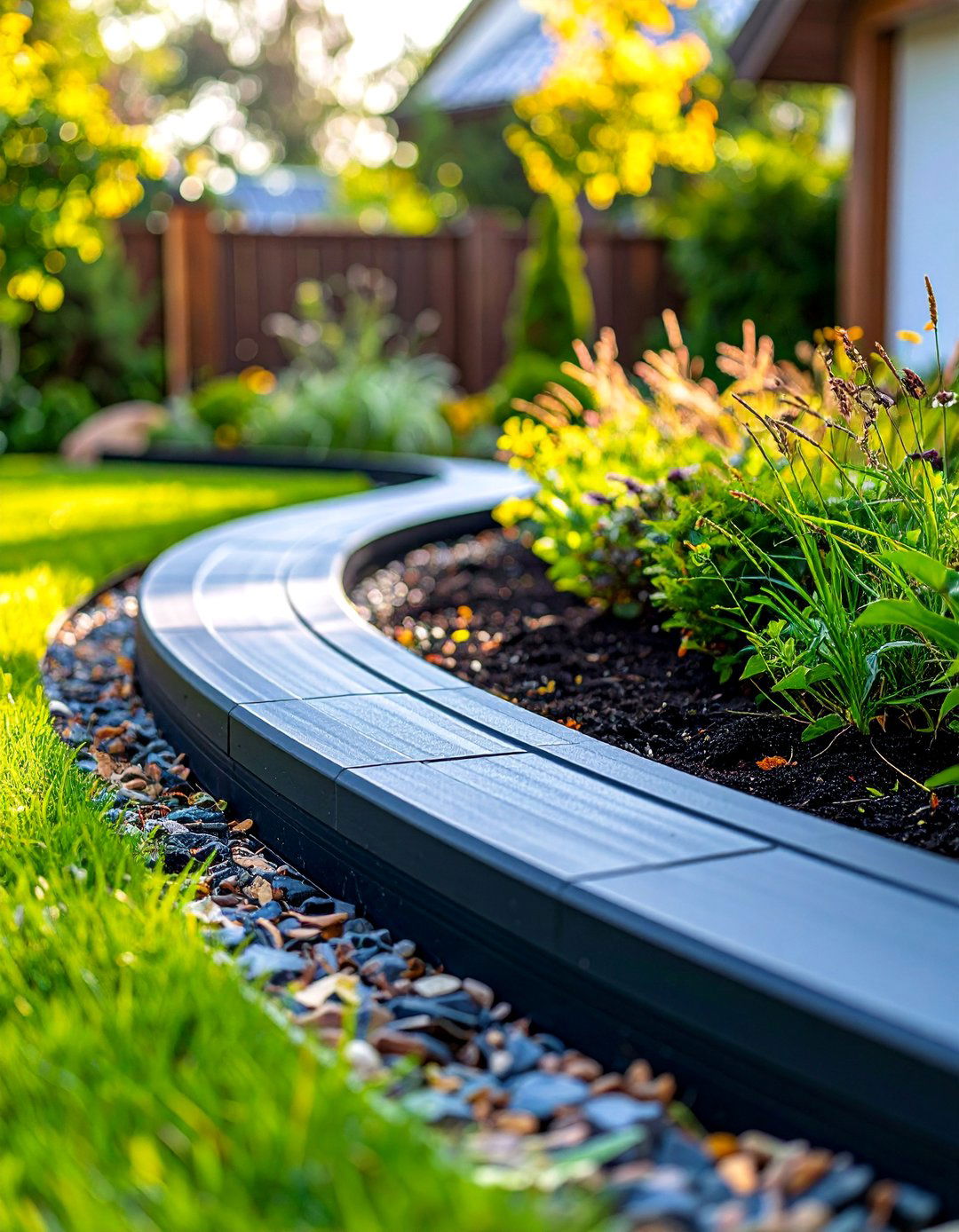
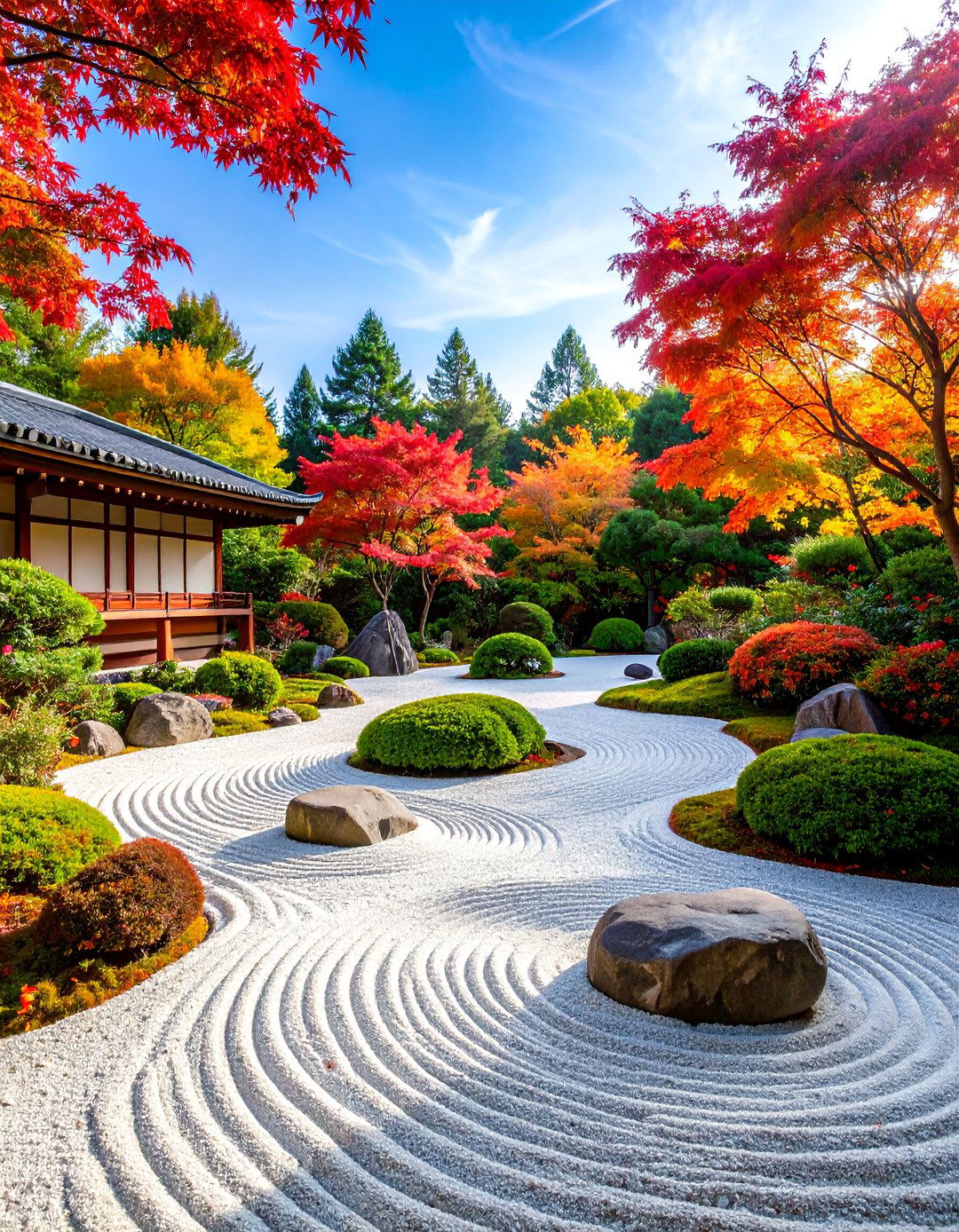

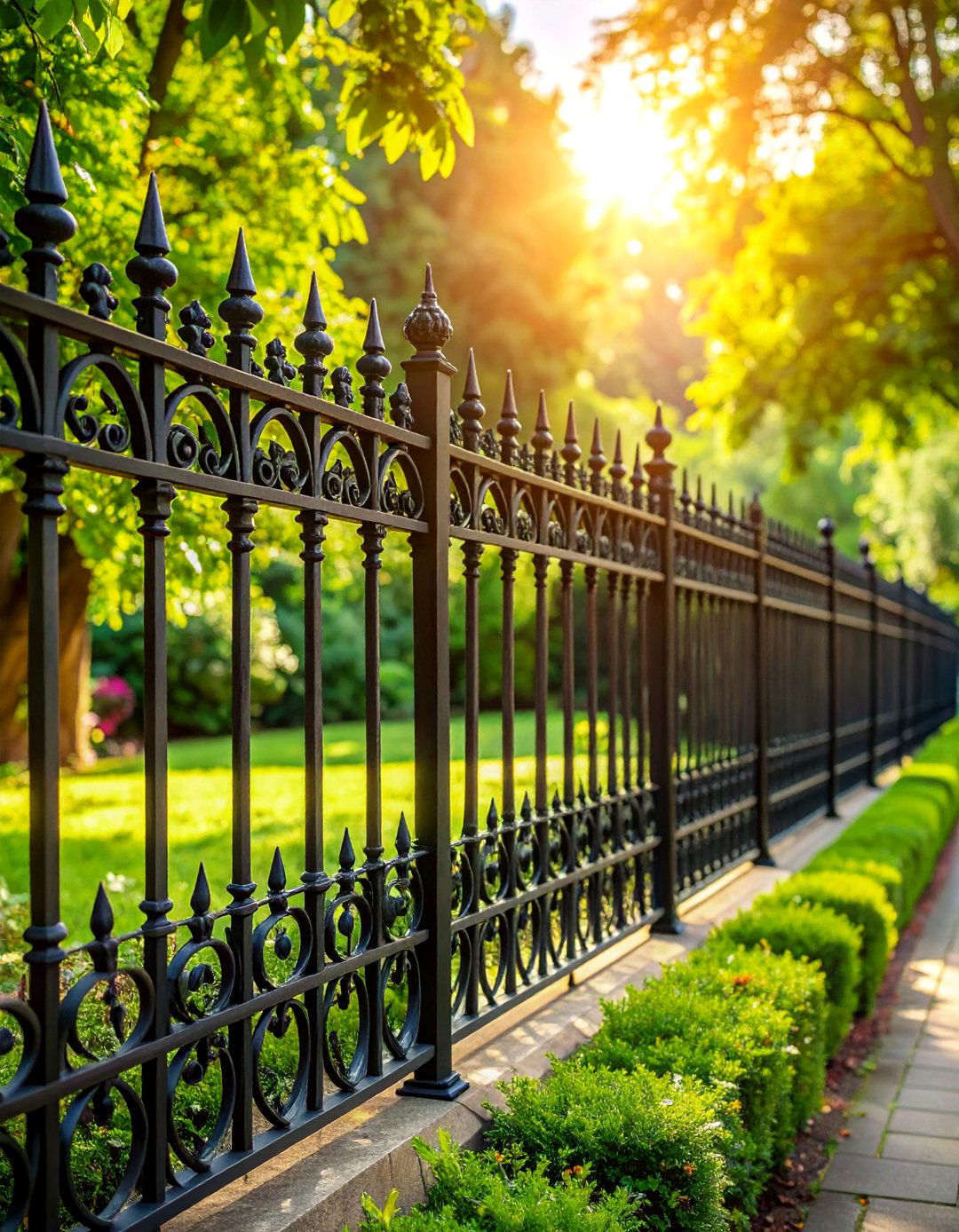
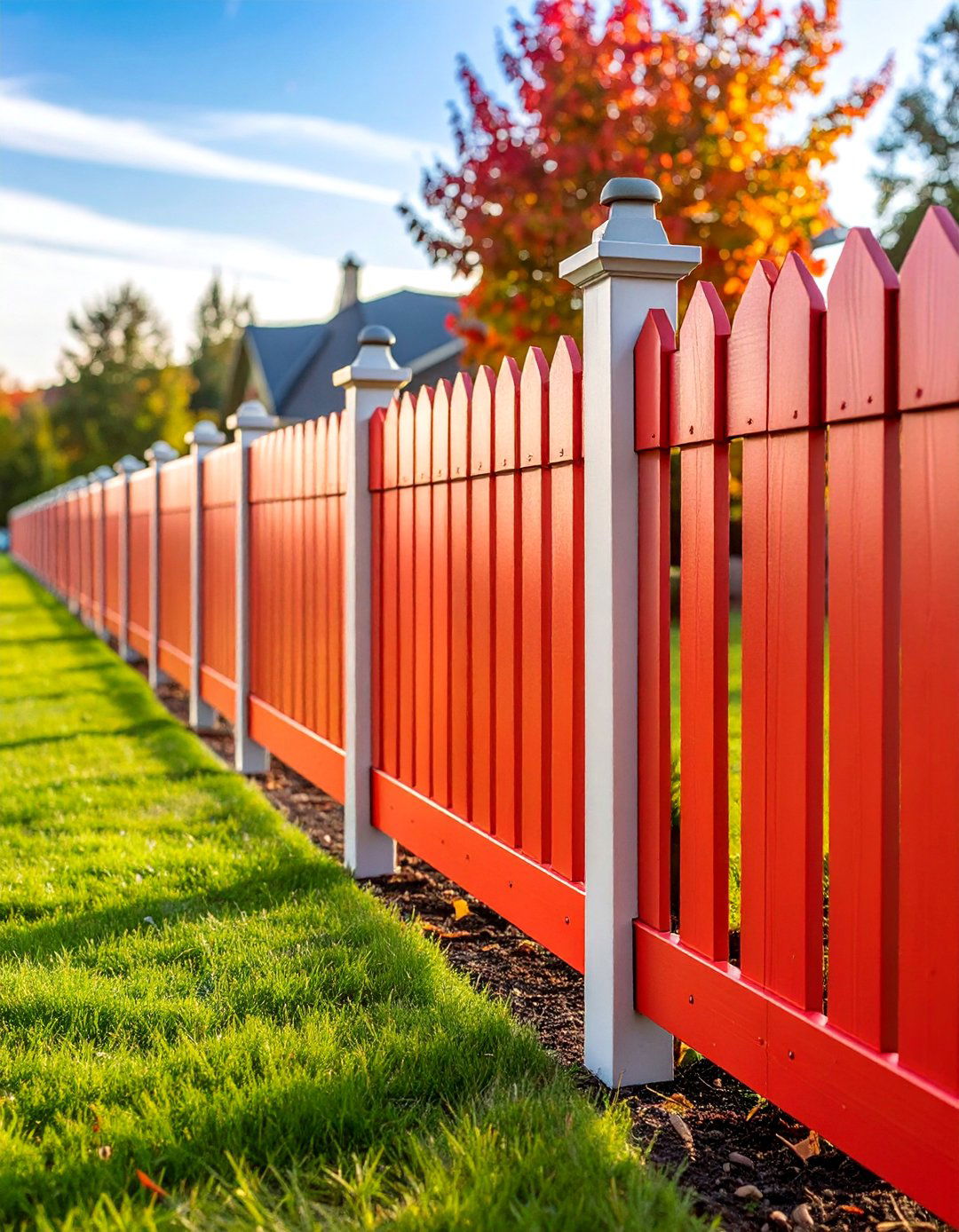




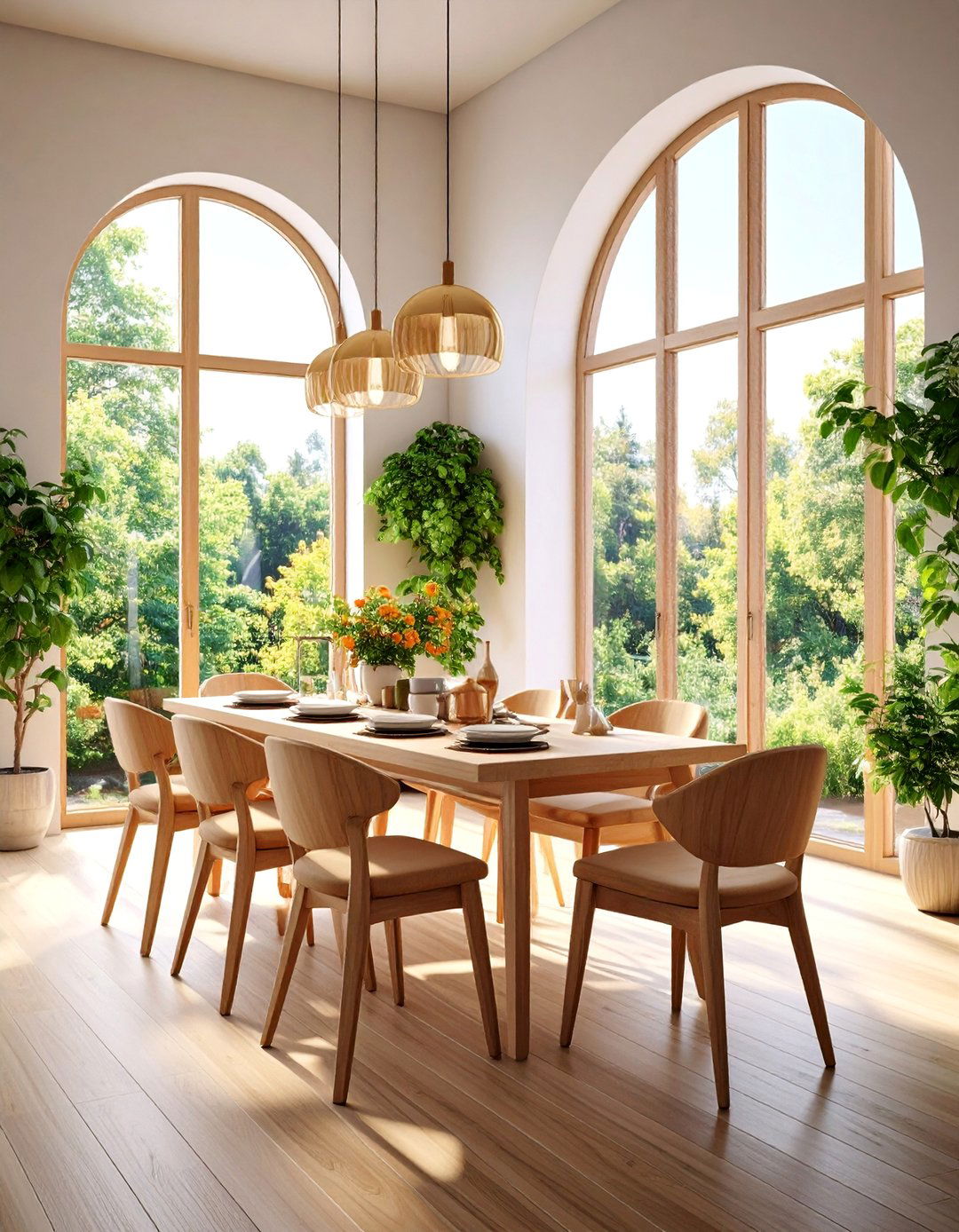



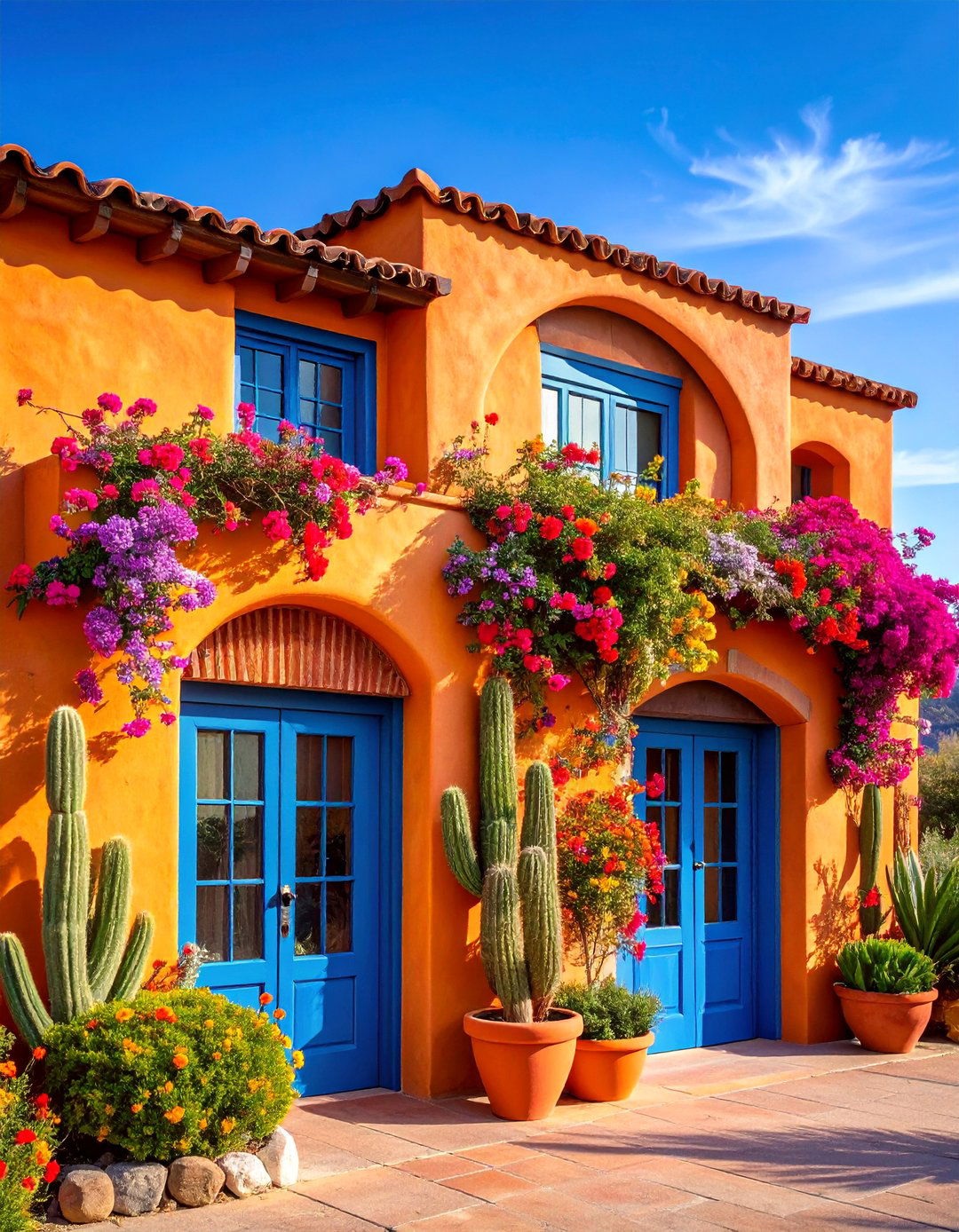
Leave a Reply